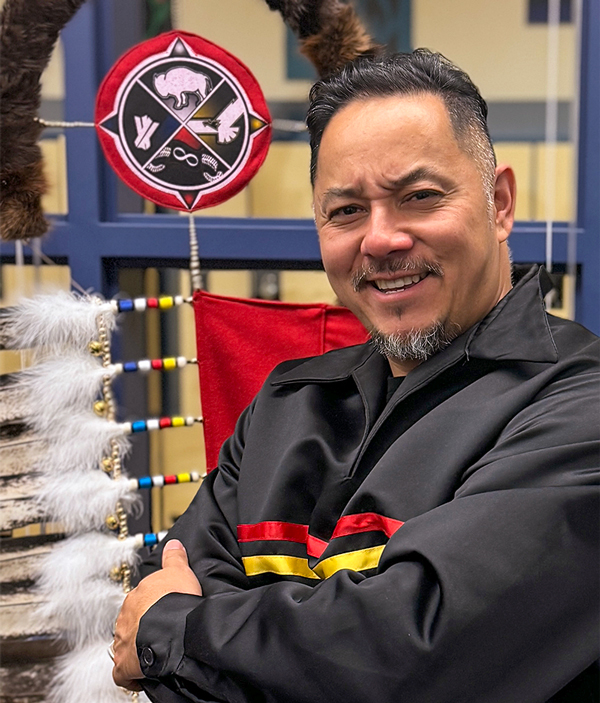Terris Mah, ’07 BEd, ’07 BA(NativeStu), is an enthusiastic advocate of First Peoples’ House — where Indigenous students at the University of Alberta can find practical, social and academic support. As a university student, Mah says, the friendships and guidance he found at FPH were invaluable.
Now, Mah is acting principal at amiskwaciy Academy in Edmonton. He says the advice and connection that FPH offered him during his combined-degree studies continue to guide him today.
He first enrolled in the Transition Year Program, a one-year program that prepares Indigenous students for university by providing academic support and a strong cultural network. He is such a fan of its benefits that he “all but insisted” each of his children enrol in the program. He even drives interested amiskwaciy Academy students to the U of A to introduce them to FPH and its staff.
Mah shares five things he has learned from two decades of connection with First Peoples’ House.
1: Community strengthens our belonging
Because First Peoples’ House exists, you know you’re supposed to be there, in university, and that allows you to excel and be a strong student. A lot of the worry was taken away by FPH support, which allowed me to just grow in my knowledge and humanity.
2: Family is always there
First Peoples’ House makes you feel loved. You’re in a community of love. Then there’s space to voice ideas and teachings — which has been our space since time immemorial — and we’re given that space back. It’s like a protection. You don’t always need it, but it’s always there and always ready. It’s security.
3: Change is fostered through generations
When I was starting university, we talked about making Native Studies mandatory for everyone, and that’s starting to happen now in certain programs. But back then, those were just conversations. First Peoples’ House gave us the space to have such discussions. It allowed us to be heard. We came together, found each other, had the conversations, and then it happened. The next wave of Indigenous scholars coming through, they’re going to build on that.
4: Giving Indigenous students voice and space helps Indigenous cultures regain their place
For a long time, residential schools were a big, dark secret that no one talked about. And then people started to speak: the Elders spoke on it and we couldn’t ignore that hidden part. Now it’s in the curriculum. But it’s not all about the traumatic past. It’s also about the beauty of our culture, the rich stories and songs. They’re being told, too. They’re being embedded in our education. We’re starting to weave them into the fabric. They belong there. They’ve always belonged there. They were here first.

We at New Trail welcome your comments. Robust debate and criticism are encouraged, provided it is respectful. We reserve the right to reject comments, images or links that attack ethnicity, nationality, religion, gender or sexual orientation; that include offensive language, threats, spam; are fraudulent or defamatory; infringe on copyright or trademarks; and that just generally aren’t very nice. Discussion is monitored and violation of these guidelines will result in comments being disabled.